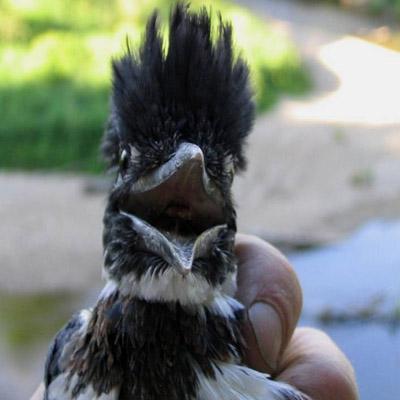Linking Land Use Change, Stream Geomorphology, and Aquatic Integrity in Changing Forested Landscapes

Development is changing the landscape of the Northern Forest. Increasing densities of roads and buildings and division of forest land into smaller parcels threaten the health of streams and rivers in these changing watersheds. When land use changes, snowmelt and storm water runoff patterns also change, and stream channel form, or geomorphology, becomes altered. This can impact small aquatic organisms called macroinvertebrates, fish, and birds that depend on healthy stream channel habitats.
NSRC researchers sampled several streams in both good and poor geomorphic condition in the Lake Champlain Basin of Vermont and identified habitat conditions most essential to macroinvertebrates, fish, and the kingfisher, a water dependent bird. For example, they found that streams in good geomorphic condition supported kingfisher young with greater weights. Kingfisher parental pairs required longer territories along streams in poor geomorphic condition than along streams in better condition.
Using GIS (geographic information systems) and mathematical modeling, researchers linked land use patterns to measures of stream habitat and ecological condition. Although no hard and fast thresholds were identified, they did find that when a watershed contained greater than 7% urban area or greater than 25% agricultural area, stream geomorphic condition declined. This management tool helps to identify watersheds and streams threatened by urban development and targets areas where local land use planning can protect aquatic ecosystems before they become seriously degraded. Maps showing predicted development in the watersheds of west central Vermont will aid state and local land managers in planning for conservation and restoration priorities.
Download printable version [PDF]
Download full final report [PDF]
